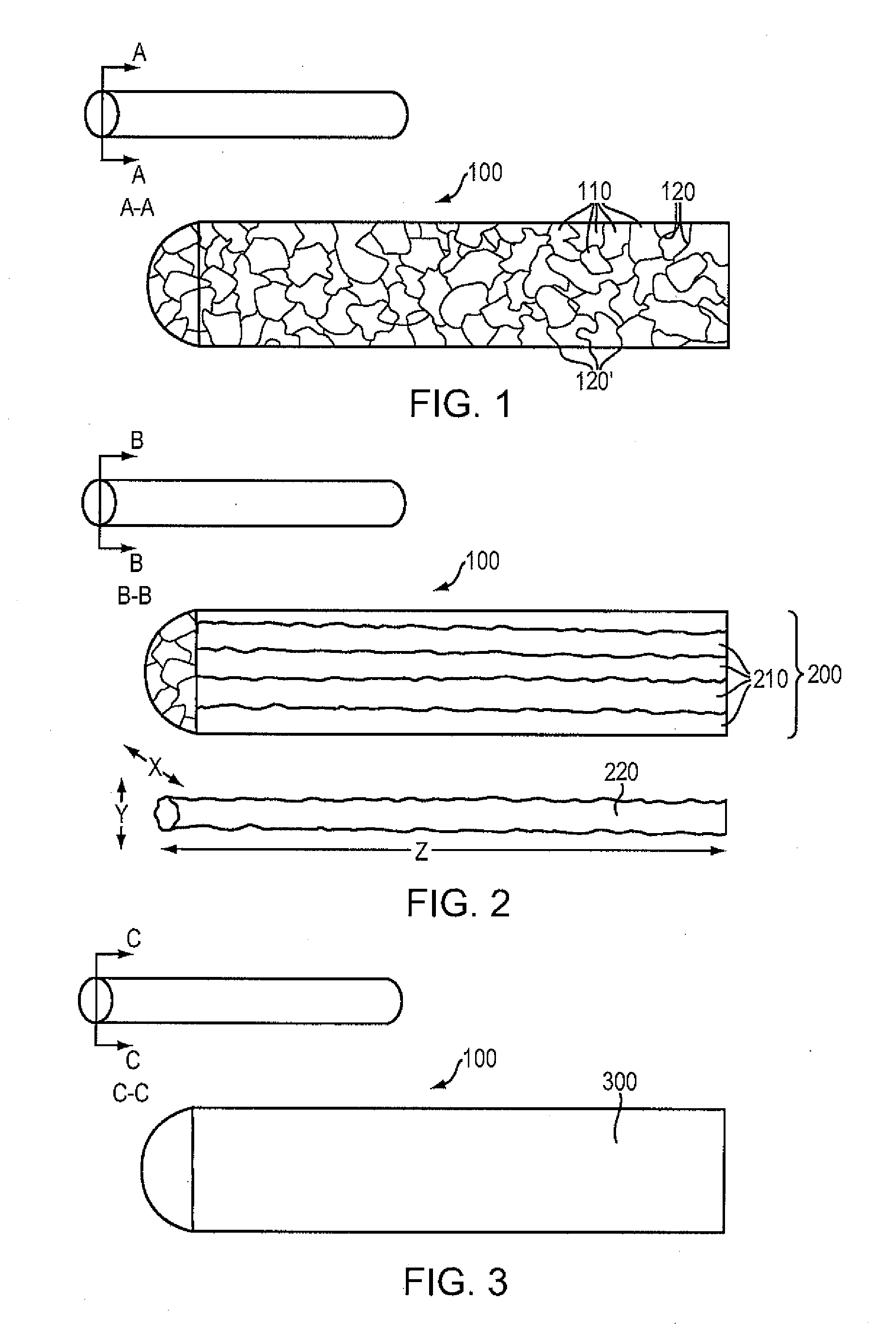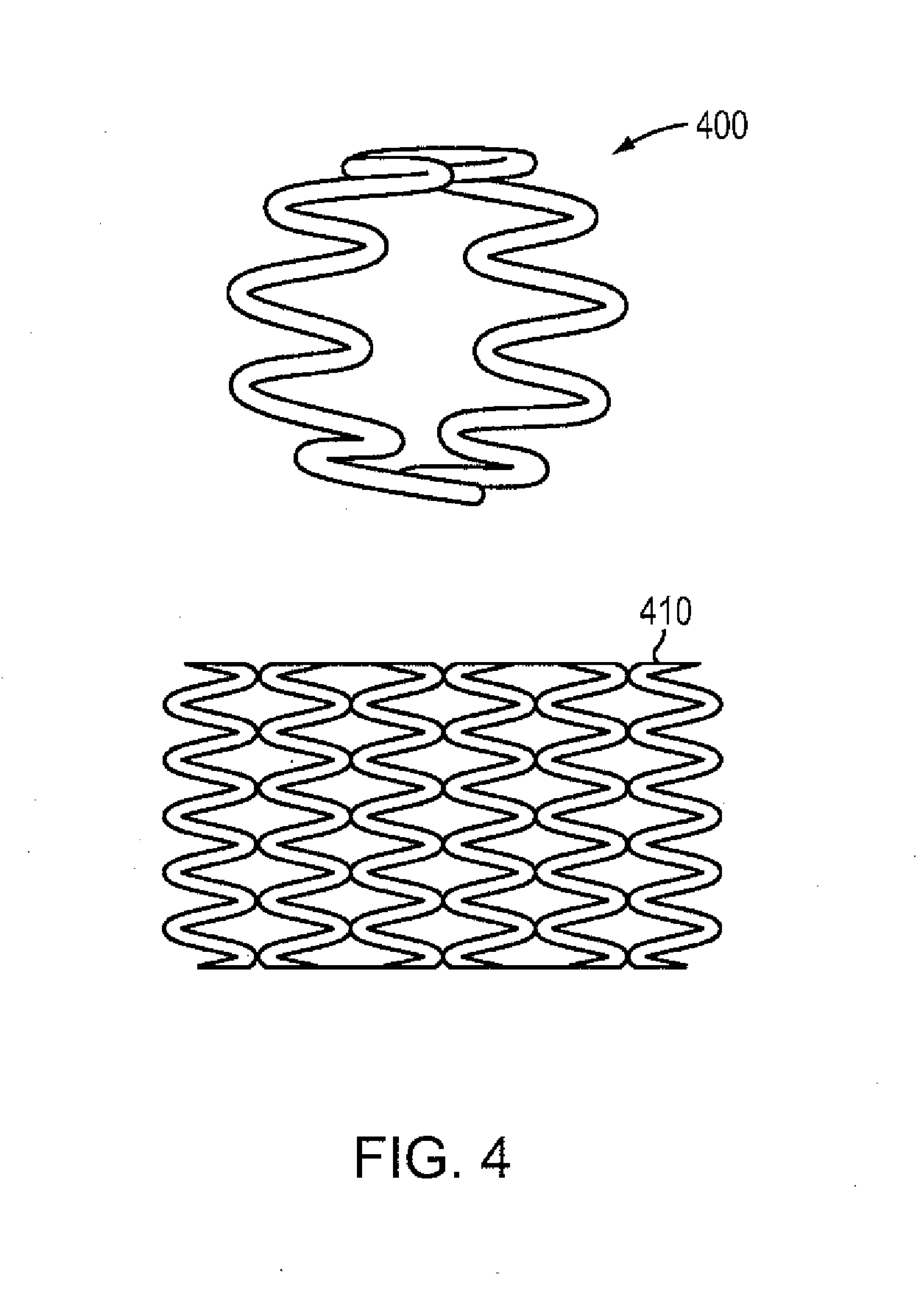Magnesium-Based Absorbable Implants
a technology of magnesium-based implants and absorbable implants, which is applied in the field of implants, can solve the problems of high restnosis rate, accompanied by new challenges, and high restnosis rate, and achieves the effects of reducing the risk of fracture, and improving the quality of li
- Summary
- Abstract
- Description
- Claims
- Application Information
AI Technical Summary
Benefits of technology
Problems solved by technology
Method used
Image
Examples
example 1
[0086]A high purity alloy of Mg-4% Li may be melted under vacuum and cast into a graphite mold resulting in a rod of 25 mm diameter by 40 cm long. The rod is subsequently drawn into a wire of 100 microns in diameter by conventional die drawing and annealing methods. The wire possesses an elongation-at-break percentage greater than 20%. This material property indicates the percentage increase in length that is attained before the material breaks under tension. The wire may then be formed on a four-slide machine into a continuous sinusoidal geometry with periodic straight segments. The continuous wire form may then be wrapped around a 3.0 mm diameter mandrel allowing contact between adjacent rings, and capacitive discharge welded in selective locations to form a flexible cylindrical intraluminal stent. The stent may be spray coated with a formulation of 50% D,L-PLA absorbable polymer and 50% Sirolimus with a drug loading of approximately 10 micrograms per mm of stent length. The coate...
example 2
[0087]A high purity alloy of 87.5% magnesium and 12.5% lithium (by weight) may be vacuum melted and cast under a protective atmosphere and into a 20 mm diameter rod. The rod may be subsequently reprocessed by equal channel angular pressing (“ECAP”) to form an ultra-fine microstructure with a grain size of less than 1 mm. The rod may be die drawn into a 100 micron diameter wire by conventional methods of sequential drawing and annealing. The wire may be formed into a sinusoidal waveform of 1 mm amplitude with periodic straight segments at ring intervals, wrapped on a cylindrical mandrel, and resistance welded in discrete locations to form an expandable metal tube. The entire assembly may be coated with a formulation of approximately 6% PTx in 90-10 PLGA, crimped on an angioplasty catheter, packaged and sterilized.
example 3
[0088]A high purity alloy of 91.5% magnesium and 7.5% lithium (by weight) and 1% Zn may be vacuum melted and cast into a sheet mold equipped with an ultrasonic transducer resulting in a fine grain alloy (less than 5 micron average grain size). The sheet may be rolled down to a thickness of 100 microns, and then divided into square (100 micron x 100 micron) continuous wires. The square wire may be formed on a wire form machine into a continuous undulating structure which is capable of being spirally wrapped on a cylindrical mandrel. The helical wire structure may then be inserted into a precision steel cavity mold and liquid 85-15 PLGA polymer may be injected to form longitudinal connectors that transform the structure into an integral tubular structure. The entire assembly may be coated with a formulation of approximately 50% Sirolimus and 50% D,L-PLA with a total dose of about 10 microgram per mm of stent length. The resulting absorbable DES may be crimped on an angioplasty cathete...
PUM
| Property | Measurement | Unit |
|---|---|---|
| diameter | aaaaa | aaaaa |
| diameter | aaaaa | aaaaa |
| thickness | aaaaa | aaaaa |
Abstract
Description
Claims
Application Information
 Login to View More
Login to View More - R&D
- Intellectual Property
- Life Sciences
- Materials
- Tech Scout
- Unparalleled Data Quality
- Higher Quality Content
- 60% Fewer Hallucinations
Browse by: Latest US Patents, China's latest patents, Technical Efficacy Thesaurus, Application Domain, Technology Topic, Popular Technical Reports.
© 2025 PatSnap. All rights reserved.Legal|Privacy policy|Modern Slavery Act Transparency Statement|Sitemap|About US| Contact US: help@patsnap.com



